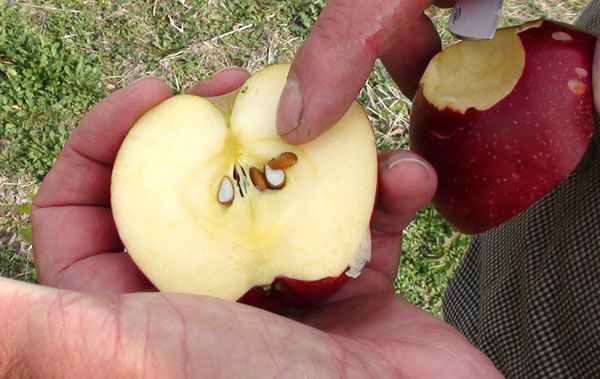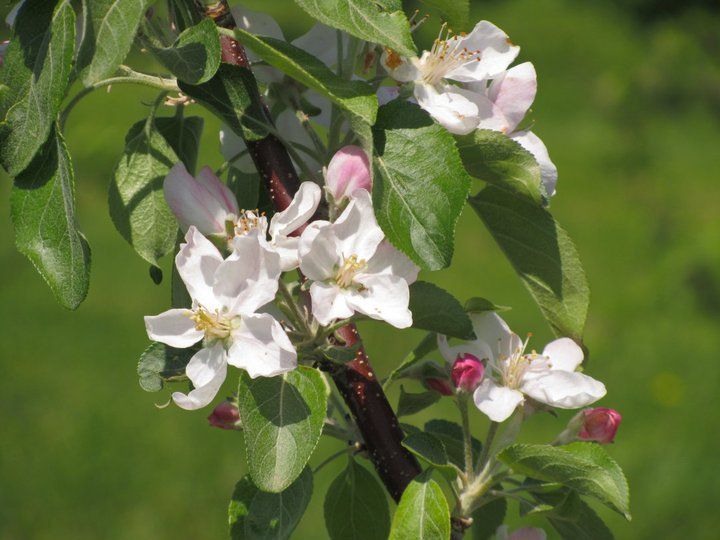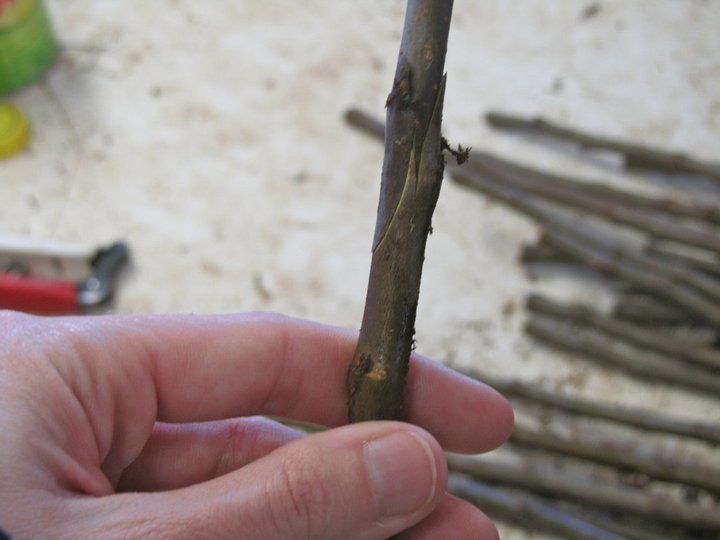The Science of Grafted Fruit Trees
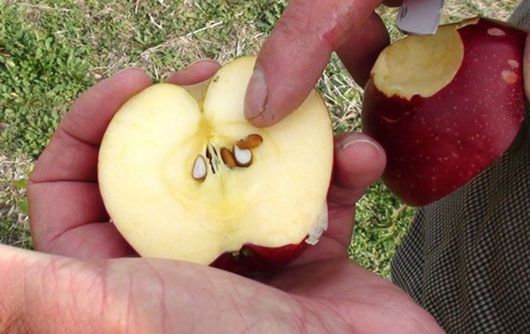
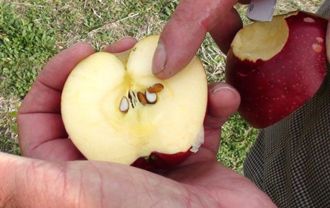
Have you ever wondered why you can't always grow a true-to-name fruit tree from planting seeds? Many people ask if it's possible to take seeds from an apple, plant them, and grow trees that yield the same exact type of apples the seeds came from.
Unfortunately, for most fruit trees*, this isn't how it works. To explain, we'll start by addressing the history contained in seeds and why it's more reliable to plant and grow grafted fruit trees.

*There are exceptions, like pawpaw seedlings and certain types of citrus, which tend to have little variation even as seed-grown trees.
Reproduction in Fruit Trees
Let's use apple trees as an example. Most apple trees are not self-fertile, meaning they need another apple tree blooming nearby at the same time to pollinate their blossoms.
For example, if you have a Honeycrisp apple tree, you would need a different variety, like a Golden Delicious, for pollination. Bees, wind, and other pollinators transfer pollen from one tree to another, fertilizing the flowers and allowing fruit to develop on both trees.
The Genetic History Contained in Seeds

The most reliable way to maintain the desired characteristics of a fruit tree is through grafting. This process involves taking a scion or bud chip from the desired parent tree (e.g., a Granny Smith apple tree) and attaching it to a compatible rootstock. Over time, the two parts heal together and grow as one tree. All growth from the rootstock is removed, ensuring that the new tree retains the characteristics of the scion variety. This method is called "asexual reproduction."
The fruit itself is simply a vessel for the seeds, which carry traits from past generations. This means that if you plant a Honeycrisp apple seed, the resulting tree may not produce Honeycrisp apples at all. Instead, the fruit may display characteristics from anywhere in its genetic lineage, making the outcome unpredictable.
Grafting for Consistency
The most reliable way to maintain the desired characteristics of a fruit tree is through grafting. This process involves taking a scion or bud chip from the desired parent tree (e.g., a Granny Smith apple tree) and attaching it to a compatible rootstock. Over time, the two parts heal together and grow as one tree. All growth from the rootstock is removed, ensuring that the new tree retains the characteristics of the scion variety. This method is called "asexual reproduction."
Since grafting involves only one parent tree, the resulting grafted tree will be true-to-name, consistently producing the same fruit variety as the original parent tree.
How Stark Bro's Propagates Trees
Most of Stark Bro's trees are propagated through either grafting or budding. Budding is a similar process in which a single vegetative bud is placed into the rootstock and secured with cellophane tape until it heals. Both methods result in true-to-name trees with predictable characteristics.
The Benefits of Grafted Fruit Trees

A grafted tree has a reliable track record:
- Its fruit has a consistent size, flavor, and quality.
- It blooms at a predictable time.
- It bears fruit at a consistent time.
- It has known traits like disease resistance or cold-hardiness.
See the consistency in size and shape of these grafted fruit trees?
By planting grafted or budded trees, you ensure a predictable outcome in your orchard or backyard. Investing in a grafted tree means knowing exactly what you're getting—a tree with proven characteristics, reliable fruiting, and a history of success.
— Elmer Kidd, Stark Bro's Chief Production Officer (retired)
- Article Categories:
- Ideas & Inspiration

